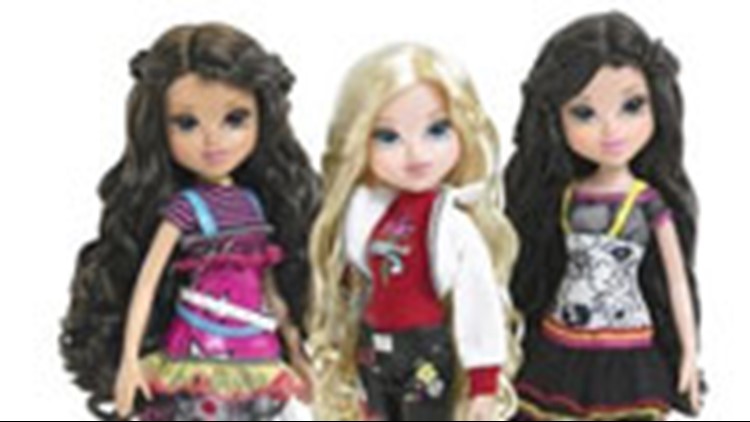With more modest apparel and figures than Bratz, you can think of Moxie Girlz as Bratz lite, and MGA is banking on the line to keep it afloat.
MGA Entertainment began developing Moxie Girlz, targeted at girls ages 6 to 10, last year. The line was inspired by the recession and the changes in families' lifestyles that came up in focus group discussions, says Paula Garcia, vice president of product design and development.
"We wanted to make the doll a reflection of the consumer herself, not lavish, expensive, material things," she said. "The fashion is 'everyday' fashion as opposed to very lavish fashions."
Early sales of Moxie Girlz, which started appearing in some Target and Wal-Mart stores on July 22 and will be available nationwide Aug. 15, have been "very good," MGA CEO Isaac Larian said without providing details. A TV, print, radio and online ad campaign starts in September.
The dolls have a subtler look than the pouty-lipped Bratz, who have drawn fire for their skimpy clothing. And the new look is key, said BMO Capital Markets analyst Gerrick Johnson.
"I think they're adorable," Johnson said. "Barbie looks like a model, Bratz look like tramps and Moxie Girlz look like girls."
The success of the line is crucial to Los Angeles-based MGA. A U.S. District Court ordered MGA to transition the Bratz doll line to Barbie maker Mattel by spring, concluding a lawsuit in which El Segundo, Calif.-based Mattel alleged Bratz designer Carter Bryant developed the concept for Bratz while at Mattel. A jury last year awarded Mattel $100 million in damages for copyright infringement and breach of contract. MGA is appealing, and a mediator is working with the parties.
Though MGA also makes Little Tikes, Rescue Pets and Lil Angelz, among other toys, Bratz was by far its biggest seller. Johnson estimates sales of Bratz peaked in 2005 at $750 million and have fallen since, perhaps below $200 million in 2009. The privately held company does not publish its revenue.
Moxie Girlz come in several different styles: "Jammaz" - in pajamas - come with a guitar and a microphone; "Art-titude" come with shoes and a bike you can draw on and "Magic Hair" come with two sets of hair. They cost $17.99 to $29.99 each; accessories include a car and a salon play set.
The toy industry's doll segment has been in decline for a few years as more girls find entertainment online and in tech gadgets. Doll sales overall fell 10 percent to $2.68 billion in 2008, according to market research firm NPD Group. And sales of Barbie, the segment's leader, slipped 15 percent in the second quarter compared with a year earlier, though the decline was driven in part by the recession.
New doll lines could boost the category, Johnson said. Besides Moxie Girlz, new entries include Liv dolls, which Spin Master introduced Saturday. They look similar to Moxie Girlz and sell for $19.99.
"There is tremendous opportunity in the girl segment for something new, interesting and compelling," Johnson said. "Kids can be fickle. This could be the thing the girls' business needed."
(Copyright 2009 The Associated Press. All rights reserved. This material may not be published, broadcast, rewritten or redistributed.)



